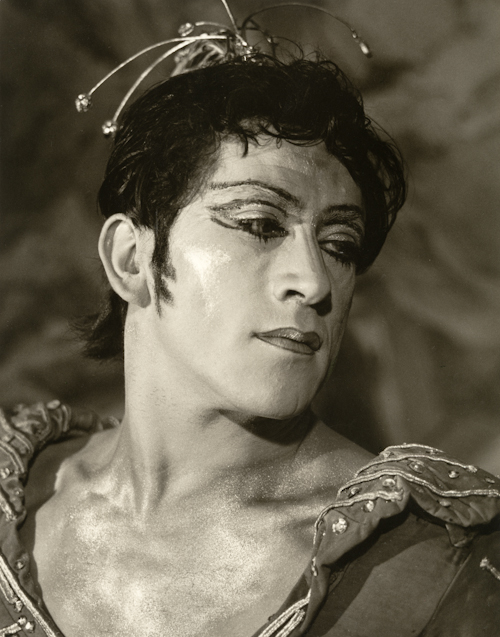

 Alexander
Grant (22 February 1925 – 30 September 2011) was a New Zealand ballet dancer,
teacher, and company director.[1]
After moving to London as a young man, he became known as "the Royal Ballet's
most remarkable actor-dancer in its golden period from the 1940s to the
1960s."[2]
Alexander
Grant (22 February 1925 – 30 September 2011) was a New Zealand ballet dancer,
teacher, and company director.[1]
After moving to London as a young man, he became known as "the Royal Ballet's
most remarkable actor-dancer in its golden period from the 1940s to the
1960s."[2]
In 1971, when age and physical disability began to limit the frequency of his performances, Grant became director of Ballet for All, the educational group within the Royal Ballet. He retired from the company in 1976 and accepted the post of artistic director of the National Ballet of Canada, based in Toronto. During his seven years there, he significantly enlarged the company repertory by acquiring works by Ashton, Cranko, MacMillan, Béjart, and other internationally known artists as well as by encouraging such young Canadian choreographers as James Kudelka, He also occasionally appeared on stage as Alain, Carabosse, and various characters in mime roles.[14]
Upon his return to England in 1983, Grant became an extremely popular guest performer and producer. He joined London Festival Ballet (now English National Ballet) as coach and performer, appearing in mostly mime roles such as Doctor Coppélius, Herr Drosselmeyer, and Madge the Witch in La Sylphide. At the "Gala Tribute to Sir Frederick Ashton in Celebration of His 80th Birthday", held on 18 October 1984 at the Royal Opera House, Grant honored his mentor and friend by dancing a role originated by Ashton in 1931, that of the oily Dago in the Tango-Pasodoble of Ashton's perennially popular Façade.[15] He was fifty-nine years old at the time. When Ashton died in 1988, he left the rights to Façade and La Fille Mal Gardée to Grant, who subsequently traveled widely, staging and coaching these ballets for various companies.

Alexander Grant by George Platt
Lynes
Offstage, Grant was one of the most beloved members of the Royal Ballet. With his twinkling eyes, gregarious nature, and direct, often humorous turn of phrase, he won many friends and admirers.[16] As a young man, his magnetic personality, thick mane of hair, and craggy good looks caused him to be an object of lust by both sexes. He was romantically attached to ballerina Nadia Nerina in his early years in London but abandoned her in 1953 in favor of an intense affair with Frederick Ashton, who had fallen deeply in love with him. When their romance cooled, Ashton and Grant became fast and lifelong friends as well as professional colleagues.[17] In the autumn of 1984, Grant was the only personal friend of Ashton's to be invited to a dinner party hosted by Princess Margaret in honor of Ashton's recent birthday. When Ashton died in 1988, he left "all royalties and profits from my copyrights" to a small group of friends. Those to Façade and La Fille Mal Gardée were bequeathed to Grant.[18]
In old age, Grant underwent a hip replacement and prostate surgery. His second hip replacement should have been a routine procedure and recovery, but it turned into a pain-racked, seven-month stay in hospital. He died in 2011, at age eighty-six. He was survived by his partner, Jean-Pierre Gasquet, his companion of fifty-four years, and his brother Garry, fifteen years his junior. Also a dancer with the Royal Ballet, Garry Grant inherited many of his older brother's most famous roles.
My published books: